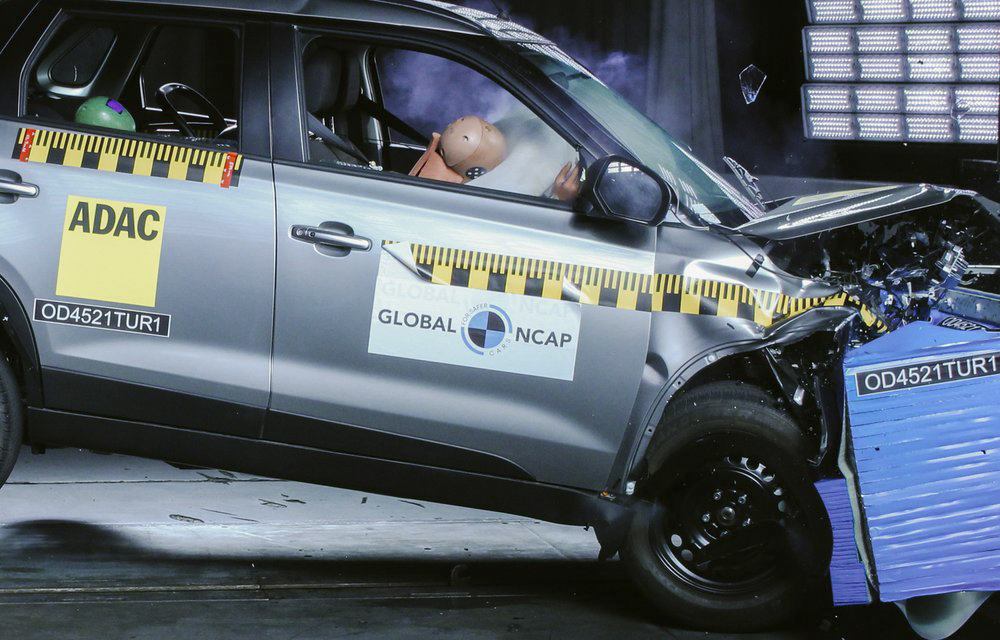Hyundai Creta scores 3 stars in GNCAP; Toyota Urban Cruiser scores 4 stars
The Toyota Urban Cruiser exceeded expectations with a safety rating of 4 stars from the GNCAP while the Hyundai Creta and i20 were noted for having issues.
 The Toyota Urban Cruiser did very well
The Toyota Urban Cruiser did very wellThe second round of Global NCAP crash tests for the year 2022 took place with three cars in attendance. From Hyundai, the Creta and i20 were present. On the other side, it was a surprise to see a Maruti-Suzuki based car, as Toyota sent in their Urban Cruiser. Here are the scores for each of these cars:
The Toyota Urban Cruiser was ahead in the tests as it scored a 4-star adult safety rating from the jury. It also got a three-star rating in the child protection category. The Urban Cruiser scored 13.52 points out of 17, a respectable number that corresponds to the Maruti Brezza’s 12.51 that it scored before the facelift.
The Hyundai Creta managed to score only 8 points out of 17 in the adult crash protection test, with 3 stars overall. Considering that almost all its rivals have scored 4 stars or more, this performance was not confidence inspiring. The Tata Nexon and Mahindra XUV700 have scored 5 stars, while other compact SUVs like the Renault Kiger-Nissan Magnite twins and the Maruti Brezza-Toyota Urban Cruiser twins each have 4 star crash safety ratings. The Creta’s platform sibling, the Kia Seltos, also recently scored only 3 stars and warnings for instability. Other rivals for the Creta, such as the MG Astor, Skoda Kushaq, Volkswagen Taigun and Nissan Kicks have not yet been crash tested by GNCAP.
The Hyundai i20 on the other hand scored slightly higher than the Creta at 8.84 points, but still secured a 3 star rating and in fact, lower than the previous gen’s 10.15 points. Rivals such as the Tata Altroz (5 stars) and even the older Volkswagen Polo and Honda Jazz (4 stars) have better crash safety ratings.
Cars that are used in the Global NCAP safety rating crash tests are always the base variants of their particular range. Therefore, the Toyota and both Hyundais were all the base variants with two airbags each, as well as ABS. Coming policy changes also aim to increase safety levels with active safety features. While this will undoubtedly help the safety rating of Indian cars, an unintended consequence will also be that cars will generally become more expensive.
Alejandro Furas, the Secretary General of GNCAP said, “Although the overall star rating of these models might seem reasonable, the continued reluctance of manufacturers like Hyundai and Toyota to equip safety systems such as ESC and side body and head protection airbags as a basic requirement in India is disappointing. This is why Global NCAP welcomes the Indian government’s initiative of increasing side impact protection requirements and why Global NCAP will update its test protocols as from July. Success in the rating assessment will then only be possible if these improved safety features are included as standard.”
 The Hyundai Creta scored similar to the Kia Seltos
The Hyundai Creta scored similar to the Kia SeltosIt is notable that even with the addition of safety features, cars in India are still structurally not safe. GNCAP was particular in noting the structural instability of the Hyundai cars and their lack of ESC. The Urban Cruiser, on the other hand, was praised for its structural stability and generally better safety performance than the other two cars. Maruti cars have long held a reputation for having bad safety, whereas the Urban Cruiser scored well because the Brezza was a safe platform to begin with. Hopefully, buyers will take into consideration safety features and force manufacturers to make their cars safer as a selling point, rather than a regulatory stopgap.


